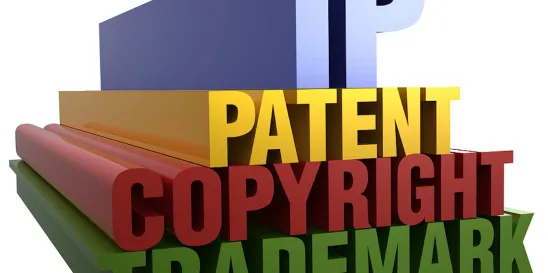- VIP Treatment of the Rogers Test – In 1989, the Second Circuit created the “Rogers test” to evaluate whether the use of a third-party trademark within a creative work’s title was infringing. The test, under which expressive rights generally trump intellectual property ownership rights, simply asks whether (i) the use of the third-party trademark has some artistic relevance to the work and (ii) the title expressly misleads the public. The Rogers test has been used since, in substantially-similar forms, by various courts to evaluate the larger question of whether the use of third-party trademarks and trademarked goods within expressive works is infringing. In 2023, the U.S. Supreme Court was expected to evaluate whether the Rogers test applied to potentially-infringing markings on a dog toy. Instead, SCOTUS focused on the dog toy maker’s hang tag, trademark application strategy, and litigation strategy to find that the dog toy maker was using the at-issue mark for source identification and therefore a traditional likelihood-of-confusion test (and not a Rogers test-based dismissal) should apply. In the first decision applying this VIP Products decision, the Second Circuit decided that one shoe’s wacky and irreverent artistic take on a classic shoe design also should receive a likelihood-of-confusion analysis and not an artistic exemption under the Rogers test. In 2024, brand owners will be watching whether the pendulum is finally swinging back towards brand owners (and away from artists) when it comes to using trademarks and trade dress in expressive works, particularly expressive works that are very commercial in nature.
- A Potential Field Day for Crowded Field Arguments – The Trademark Trial and Appeal Board is generally the first-instance decisionmaker for resolving disputes over the registrability of a trademark. In an opposition, where a prior rights owner objects to the registration of an application, this Board typically will evaluate whether the segment common to both is unique or commonplace and the key evidence is the number and nature of similar trademarks used with similar goods or services in the marketplace. Usually, the quickest and easiest way to prove a similar trademark in use with a similar good is the existence of a registration. But the Board historically has required the party introducing the registration (which is typically the applicant) to prove the registered mark is in use, even though use is a prerequisite to registration in most cases. In a 2023 decision, the Board’s reviewing court opined that, at least for registrations for identical marks, “absent proof of non-use, use could be assumed.” Litigants before the Trademark Trial and Appeal Board will be monitoring the Board’s incorporation of this instruction from its reviewing court as well as developing the ways in which non-use is satisfactorily proved to the Board.
- U.S. Trademark Office Practices – Changes are afoot at the U.S. Trademark Office as the calendar turns from 2023 to 2024. For most trademark lawyers, the decades-old (mostly) popular Trademark Electronic Search System was a mainstay technology tool used daily to access trademark record information, including searching for the availability of new trademarks. On Nov. 30, 2023, the Office retired TESS and introduced a new system (which, among other initial disappointments, discarded the “bibliographic” page for each trademark record). Initial reviews are mixed, and growing pains are expected in 2024.
As businesses become increasingly virtual, the U.S. Trademark Office continues to require “domicile” street addresses as a primary tool to combat fraudulent trademark filings. To that end, the Office does not accept post office boxes, mail-forwarding services, virtual offices, or c/o addresses as acceptable domicile addresses for a business. But the Office recently clarified that, in some cases, the home address of a business’s principal may be considered the domicile address of a business with no physical office. Unfortunately, submitting a physical address to the U.S. Trademark Office typically leads to invasive and misleading scam mailings, and many business owners do not wish to forfeit the separation between their business life and home life. This will continue to be a frustrating balancing act for many companies, at least until the USPTO’s primary reviewing court of appeals addresses the propriety of the USPTO’s current policy, during 2024.
Finally, U.S. Trademark Office first-examination times remain at a record high – on average 8.2 months. Whereas trademark applicants could once wait for the U.S. Trademark Office to initially examine an application before making decisions about international expansion (which must typically be made within six months), trademark applicants must now choose between certainty and various international trademark filing perks. Some of this risk can be mitigated through trademark searching and careful trademark selection, but the long-time advantage of prompt U.S. Trademark Office examination vis-a-vis other trademark offices around the world has become a disadvantage. Trademark attorneys will keep an eye on pendency times to see if they improve in 2024, especially following a year when trademark filings were slightly down.
- Whither Another Ground for Refusing Trademark Applications? – Federal trademark law – the Lanham Act – contains a list of reasons why the Trademark Office can refuse to register a trademark. Some of these apply to the nature of the applied-for mark, such as whether it is merely descriptive or primarily merely a surname. For the better part of a century, most of these grounds remained intact. But in recent years, the U.S. Supreme Court has whittled away some of these grounds for First Amendment purposes. In 2017, SCOTUS declared the prohibition against registering “disparaging” trademarks (offensive words) unconstitutional, and in 2019, SCOTUS declared the prohibition against registering “scandalous” trademarks (bad words) unconstitutional. The Lanham Act currently bars registration of a mark that “[c]onsists of or comprises a name, portrait, or signature identifying a particular living individual except by his written consent.” In 2024, the U.S. Supreme Court will soon decide whether it is constitutional for this registration prohibition to apply to a U.S. president’s (or former president’s) name without his (and someday her) permission or whether presidents are public figures that have somehow forfeited their protection against the registration of their name as part of a trademark.
- Jury Strips adidas’ Alleged Stripes Monopoly, But Will It Stand? – In January 2023, after three hours of deliberating, a federal district court jury in Manhattan found that a sock seller’s “four-bar signature” did not infringe adidas’ so-called three-stripe mark, eschewing a $7.8M damages claim. adidas appealed the decision, arguing, among other grounds, that the jury should have been instructed to consider initial interest confusion and post-sale confusion in addition to point-of-sale confusion. Fashion designers and trademark lawyers alike will be interested in the outcome of the appeal and whether this decision ultimately puts a dent in adidas’ obsessive enforcement efforts involving stripes on clothing and footwear.
5 Trends to Watch: 2024 Trademark and Brand Management
Tuesday, January 23, 2024
Current Public Notices
Published: 15 September, 2025
Published: 15 September, 2025
Published: 9 September, 2025
Published: 9 September, 2025
Published: 8 September, 2025
Published: 4 September, 2025
Published: 28 August, 2025
Published: 25 August, 2025
Published: 22 August, 2025
Published: 20 August, 2025
Published: 20 August, 2025
Published: 18 August, 2025
Published: 11 August, 2025
Published: 8 August, 2025
Published: 26 June, 2025






 />i
/>i

